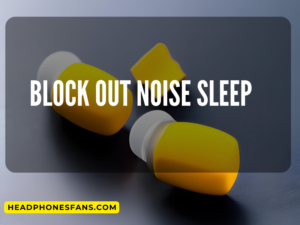Ever wondered why you can’t get those deep, rumbling basses to sound right on your home theatre system or music set-up? You might be surprised to find the answer right in front of your face. Your subwoofer is the mysterious black box you believe should perform better. How can you get a subwoofer to have more bass, then?
Bass: The Science Behind It
We must first understand the science behind sound to learn how you can get more bass out of your subwoofer. Sound waves are fundamentally vibrations traveling through a medium like air or water. These waves vibrate our eardrums, which is what our brain interprets as sound.
Low-frequency waves are responsible for bass sounds. The lower the sound, the slower the waves vibrate. These low-frequency sounds are what you “feel” and hear from a subwoofer.
The subwoofer is responsible for reproducing these low-frequency sound waves so that you can feel the bass as well as hear it. There are several factors that can affect a subwoofer’s ability to produce those resounding bass notes.
Find the perfect spot
Positioning your subwoofer in the right place is one of the best ways to increase its bass. The acoustics in a room can have a significant impact on subwoofers. Walls, furniture and even the flooring can affect how sound waves behave and influence the bass that you hear and feel.
Place your subwoofer at a corner in the room to amplify its output and make the bass louder.
This technique is called ‘corner-loading’. The walls can reinforce the bass by placing the subwoofer at a corner. Every room is different. It may be necessary to experiment to find the “sweet spot”. You can read our guide How to Choose an AV Receiver for more information on the impact of room acoustics and positioning on your sound system.
Digging deeper with a dedicated amplifier
You might consider adding an amplifier if adjusting the subwoofer’s position does not give you the bass that you want. A powerful amplifier will give your subwoofer the extra power it needs to produce those deep, rumbling notes.
Our comparison between the Skar Sdr Sdr 3x8d2 and Kicker 45tl7r102 is a great example of how amplifiers can affect a subwoofer’s performance.
Understanding the Specs
When it comes to unlocking the full potential of your subwoofer, technical specifications are essential. Subwoofer performance is influenced by factors such as power handling and sensitivity.
The sensitivity of a subwoofer, for instance, is what determines the efficiency with which it can convert its power into sound. A subwoofer with a higher sensitivity rating can produce more volume using the same power.
A powerful amplifier and a subwoofer that has a high level of sensitivity can provide you with significantly more bass.
This Klipsch R-120sw and SPL-120 Comparison provides a detailed look.
These specs are important in the performance of a subwoofer.
Going Wireless
A final point to consider is the move to wireless technology. It’s not a direct way to boost bass, but the flexibility of positioning the subwoofer can affect the output. You can read about the Wired speakers on our blog if you are interested.
The journey to get more bass is a combination of knowing the science behind sound, tweaking the setup and making informed choices based on the subwoofer specs. What is the end result? The result is a truly immersive audio experience that brings your favorite movies, music and games to life.
Keep an eye out for the next part of this post, in which we explore advanced techniques that will give your subwoofer serious bass boost. You can also visit our top headphone sites to read more about sound equipment.
Tuning your Subwoofer to Get More Bass
Tuning your subwoofer can have a significant impact on the bass. While we’ve covered positioning, knowing the specs and going wireless, fine-tuning is a more advanced technique that can help you get your subwoofer to perform at its best.
Subwoofer Crossover Frequency: Adjust it
The crossover frequency is a crucial setting that can have a significant impact on the performance of your subwoofer. The crossover frequency is the point at which your amplifier or AV receiver stops sending low-frequency sound to your main speakers, and instead sends it to your subwoofer.
Set the crossover frequency about 10 Hz higher than the lowest frequency that your speakers can handle.
In certain systems, it is possible to adjust the crossover frequency. Other systems may have a fixed crossover frequency. Refer to the manuals of your subwoofer and speakers if you are unsure how to set the crossover frequency. You can also find more information in our guide on how to connect a cross-over to an amplifier.
Dial the Correct Phase
The phase setting can also affect the performance of your subwoofer. This involves synchronizing the sound waves of your main speakers with your subwoofer so that they reach your ears simultaneously.
The sound waves from the main speakers and the subwoofer can cancel out each other, resulting in a lack of bass.
You can ensure that your subwoofer’s bass is integrated seamlessly with your other speakers by adjusting the phase. This will provide a full and smooth sound. Our Yamaha RX-V6A vs TSR-700 review is a good resource if you want to learn more about the performance of speakers and compare them.
Play with the volume and EQ settings
It’s not always the case that ‘the louder the better’ when it comes to the volume adjustment of your subwoofer. A bass that is too loud can drown out other frequencies and create an unbalanced, muddled sound. It’s important to find the right balance between too much and not enough bass.
Your subwoofer will blend into your main speakers. You may have the volume too high if you can clearly identify the source of the bass.
Similarly, the EQ settings of your receiver can be altered to increase bass. The exact method will depend on the model you have, but a common way to achieve a fuller, more balanced sound is by increasing the low frequencies while decreasing the highs.
A sound pressure level (SPL), in combination with a test disk, can help achieve the perfect balance. Our Denon SR6015 vs Denon AVR X3700H comparison will provide you with a thorough look at the effects of such tweaks on sound performance.
It’s a fact that getting the best bass out of your subwoofer takes a combination of science, art and trial and error. By understanding the fundamental principles and spending time on fine-tuning your setup, it is possible to significantly improve the performance of your subwoofer. The final part of the guide will cover even more advanced techniques to achieve that earth-shaking sound you desire.
How to get more bass from your subwoofer using advanced techniques
The bass will now be smoother, more powerful, and better integrated into your overall sound after you have carefully tweaked your subwoofer’s settings. There are also more advanced techniques that you can use to increase your bass output.
Room Calibration
Modern AV receivers have automated room calibration systems. They use a microphone that measures how sound waves interact in your room, and then adjust your system output accordingly. This can improve your bass response, by optimizing the integration of your subwoofer with your room and speakers.
The room calibration process is a way to optimize your system’s output audio for your listening environment. This results in a more natural, balanced sound.
This does not mean you cannot manually adjust the settings after the calibration. Experimenting after calibration with volume, crossover and phase settings can lead to better results. Our in-depth review of the best music AV receiver can provide valuable insight if you are looking for a new receiver.
Acoustic Treatment
This is the most significant step. By treating your room acoustically, you can improve your subwoofer’s performance. Bass traps, absorbers, and diffusers are used to manipulate the sound waves in your room.
Acoustic treatment is particularly effective at controlling low frequencies. These are more susceptible to problems like standing waves and room modes.
There are many DIY options that can be done at a reasonable price. Check out our guide on home theater problems to learn more.
Add a second subwoofer
A second subwoofer is a great option for those who are truly committed to getting the best bass. Two subwoofers will provide more bass than a single one.
Two subwoofers will smooth out the room modes, reduce localization, and create a more immersive bass experience.
Note that adding a second subwoofer requires careful calibration and placement. Don’t forget to check out our Klipsch R-12SW detailed comparison for more information on how multiple subwoofers will enhance your listening experience.
Balance is the key to getting more bass. The earth-shaking and visceral impact that deep bass has can be thrilling, but an overbearing bass can become tiresome. You want a smooth, well-integrated bass response to add depth and dimension without overwhelming the other frequencies. These tips will help you achieve the bass output you have always desired from your subwoofer. Happy listening!

Hey there mobile audio lovers! My name is Darlene R, founder and chief editor at headphonesfans.com. Ask any mobile audio fanatic, installer, or company rep what makes a good car speaker, sub or amp, or, better yet, why he or she prefers a certain brand over another, and be prepared to endure a litany of opinions, viewpoints, and passion-fueled perspectives. To be honest, mobile audio shopping can be a daunting task without a guide, so I’ve assembled what I feel are the best products to consider to make things easier for you. Welcome headphonesfans.com!




